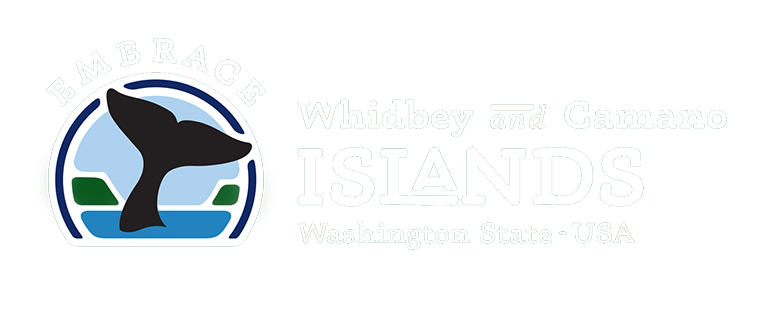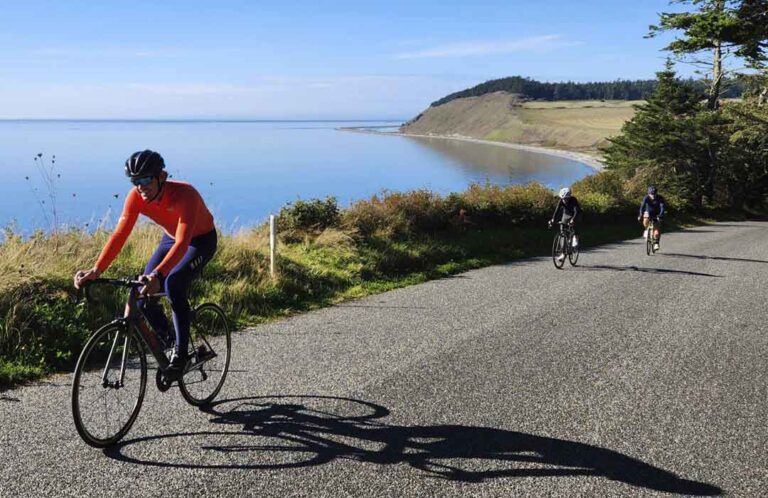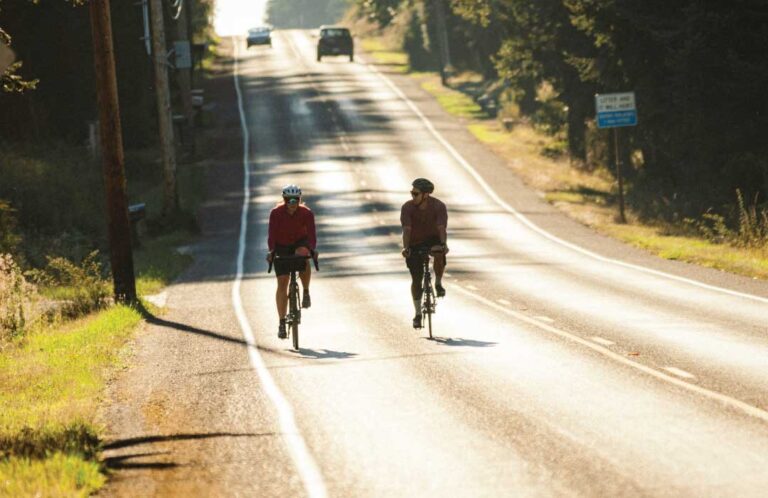
Whidbey and Camano Islands hold stories that stretch back more than 10,000 years—long before ferries crossed the sound or cabins dotted the shoreline. These lands and surrounding waters are the ancestral home of Coast Salish peoples, including the Lower Skagit, Swinomish, Suquamish, Snohomish, and other tribes who have lived in relationship with the islands since time immemorial. Their deep connection to the land shaped every aspect of life, from fishing and carving to ceremony and song.
These Indigenous communities were—and are—intimately tied to the rhythms of the Salish Sea. Longhouses once lined the shores of Penn Cove and Utsalady Bay, gathering places where stories were passed down and families came together. Villages were often seasonal, adapting to the rich abundance of shellfish, salmon, camas, and cedar. Far from being isolated outposts, the islands were part of a vibrant network of trade, kinship, and shared knowledge that spanned the entire Puget Sound region.
That legacy lives on at the Island County Historical Society Museum in Coupeville, where the exhibit Native People, Native Places offers a glimpse into thousands of years of Indigenous presence. Carefully curated in partnership with local tribes, the collection includes stone tools, woven baskets, wood-carved implements, artwork, and more. But at the center of the room—and the story—is a collection of three rare dugout canoes.

One of the most significant pieces on display is a historic canoe crafted by the Snakelum family, a prominent Indigenous family with deep roots on the island. Carved from a single cedar log, the canoe is a stunning example of traditional Coast Salish boat-building techniques. “It doesn’t really look like they sat on the canoe ledges,” explains Scott, a docent at the museum. “They actually knelt inside the canoe while paddling.”
This canoe was made not only for function, but with deep cultural significance. From the respectful sourcing of the cedar—often with ceremony and prayer—to the methodical hollowing and shaping process, every step in its construction reflects Indigenous knowledge passed down through generations. Preserving it within the museum honors not just the craftsmanship, but the Snakelum family’s enduring connection to Whidbey Island, the water, and the traditions carried forward to this day.
The Snakelum name is part of the living history of these islands, tied to the leadership and legacy of S’Klallam and Lower Skagit ancestry. Families like the Snakelums helped anchor tribal identity during times of profound change and displacement, particularly following the Point Elliott Treaty of 1855, which redefined land rights across the Puget Sound. Yet despite federal relocation efforts, many Indigenous families maintained ties to their traditional homelands—and continue to do so today.
“We have quite a collection here,” Scott continues, “and the museum is important as it serves the islands to keep the history alive—and help to show the history of the Indigenous people that were before us but are also still here.” Working directly with Coast Salish tribes, the museum aims not just to display history, but to tell stories with care, truth, and respect.
That story continues every spring with the Penn Cove Water Festival, a community-wide celebration that brings Indigenous families and visitors together in Coupeville for a day of cultural connection. In honor of the canoe traditions on display in the museum, the festival features traditional canoe races on the water—reminders of the endurance, skill, and unity that canoe culture represents. Alongside the races, attendees can explore Indigenous art, storytelling, music, and food—each element celebrating both heritage and continued presence. This year, it’s being held on May 10th, beginning at 11am.

The Water Festival itself has deep roots. Originally established in the 1930s as a way to bring Coast Salish canoe races to wider public attention, it was revived in the 1990s with the guidance of Indigenous leaders to reflect and respect cultural values more authentically. Today, it serves not just as an event, but as a bridge between communities— honoring ancestors while empowering the youth who now carry those stories forward.

Whether you’re admiring the curves of a handcarved paddle, learning about a family’s legacy through a canoe, or watching the next generation race across Penn Cove, Whidbey and Camano invite you to listen more closely to the land—and to the Indigenous people who have always been a part of its story.






